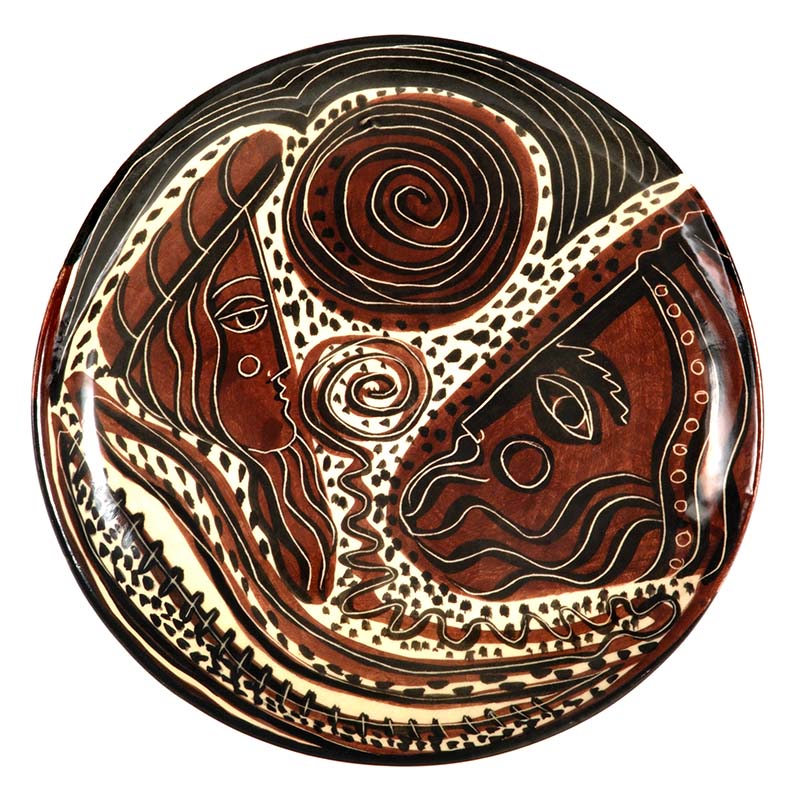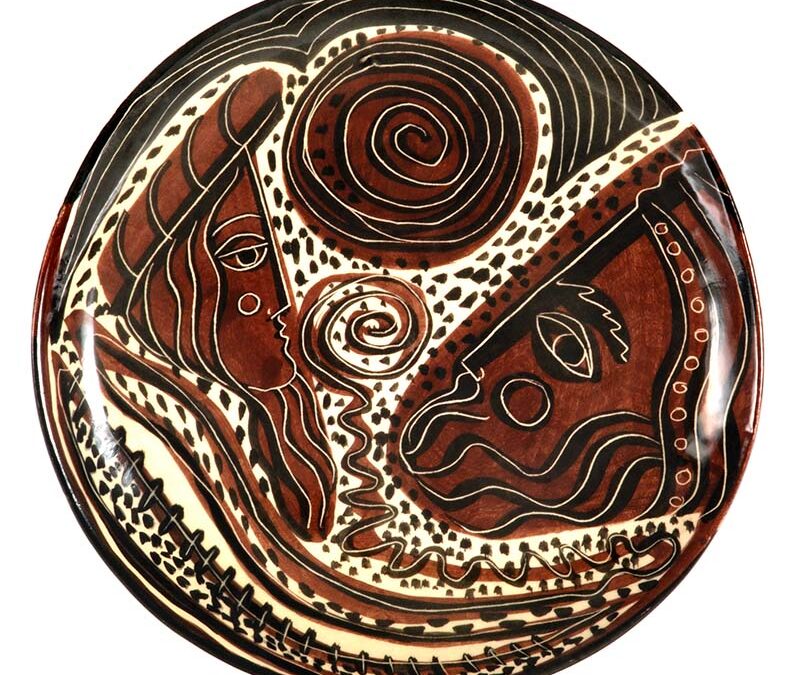
| Maker | Angelo di Benedetto (1913–92, American) |
| Date of Creation | c. 1950 |
| Location | Central City, Colorado |
| Materials | Ceramic |
| Institution | Denver Art Museum |
| Credit Line | The Collection of The Kirkland at the Denver Art Museum |
| Accession Number | K2004.1073 |
| Photo Credit | Denver Art Museum |
Born in Patterson, NJ, to Italian immigrant parents, Angelo di Benedetto graduated in 1934 from Cooper Union Art School in New York City with a scholarship to the Boston Museum School where he studied until 1937. He returned to Patterson in 1937 where he continued painting. In 1938, he joined the Army Air Corps with tours in Haiti and Africa. He lived in Haiti for six months, painting and studying the culture, and received national coverage for his Haitian paintings in Life Magazine in 1940. When discharged from the Air Force at Denver’s Buckley Field in 1946, he remained in Colorado, settling in the mining town of Central City in 1947, where he stayed for the rest of his life. He spent his first six years there transforming a warehouse into a giant art studio, a venture which cost him his first marriage to the well-known ceramic artist, Lee Porzio. He began teaching at the Central City Art School opened in his studio in 1949 and then joined Frank Vavra—a fellow founding member of the 15 Colorado Artists—to open the Denver Art Center at 924 Broadway; the venture only lasted about a year. During the 1960s and 1970s, he received numerous major commissions for outdoor sculptures. Beginning in 1969, he sponsored over 100 youths who spent a summer learning about art at his mountain home and studio in Central City. He also conducted classes for serious working artists. His efforts earned him an honorary doctorate from the University of Colorado in 1977. A painter and sculptor, di Benedetto is one of Colorado’s best known artists.
Angelo di Benedetto was inspired by the religious art of the Italian and Dutch and incised classical-looking profiles into this ceramic plate. The design of this plate depicting two faces relects di Benedetto’s early work, which was dominated by representational figures, combined here with a modernist style. Di Benedetto worked in a variety of media during his career: acrylic, watercolor, metal, woodcut, and ceramics. From the early 1950s on, he would fully embrace abstraction and eliminate representational themes from his work.

